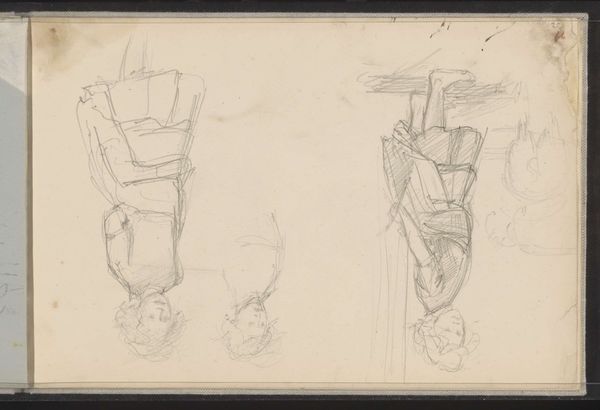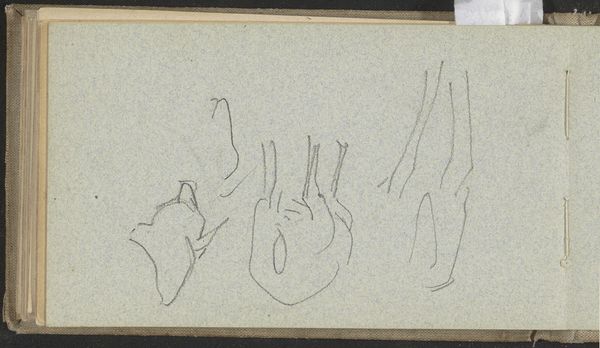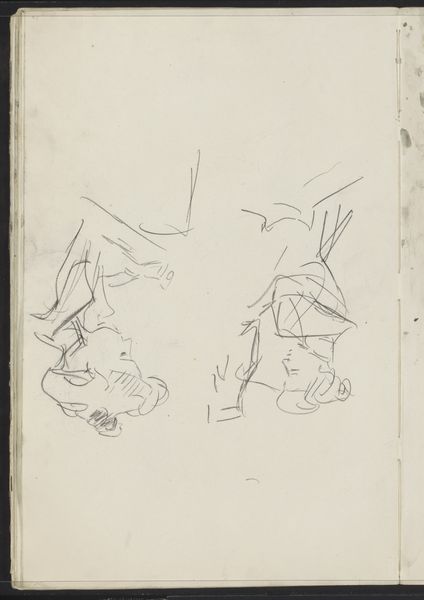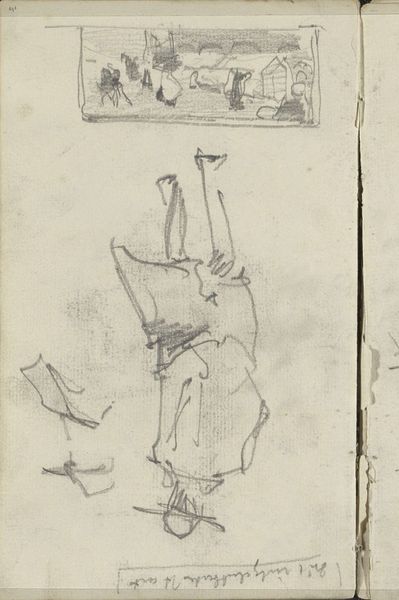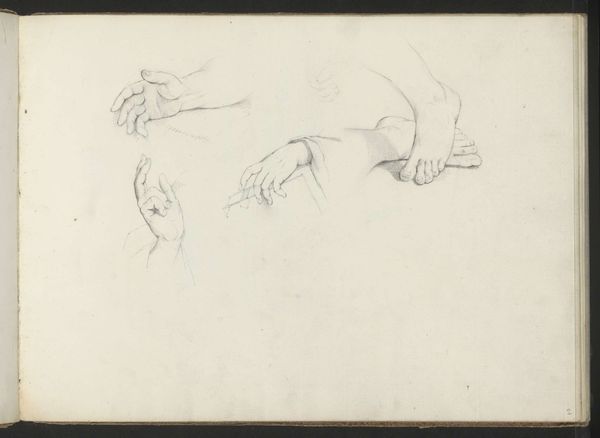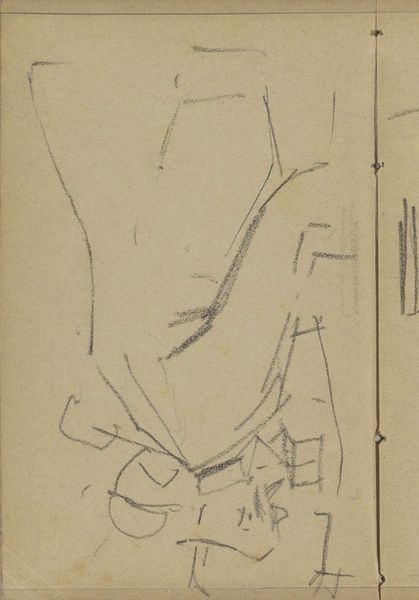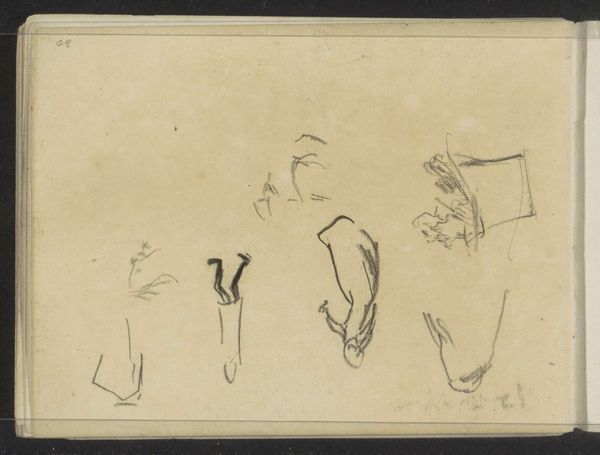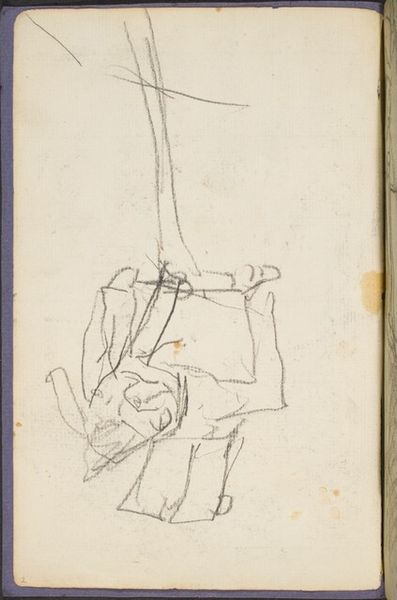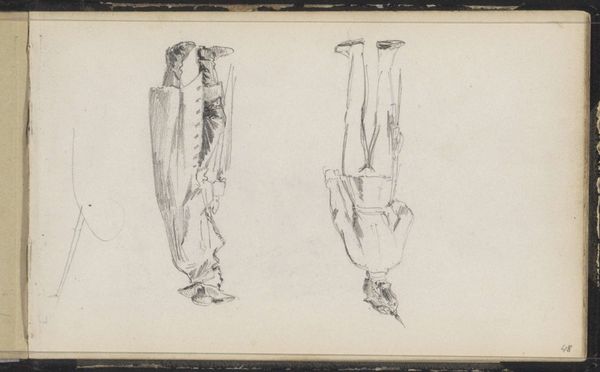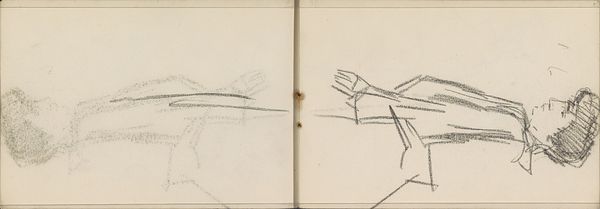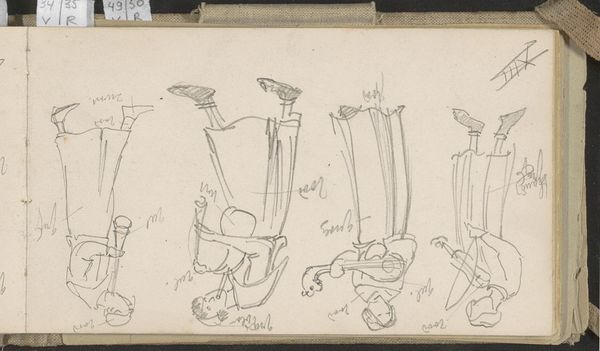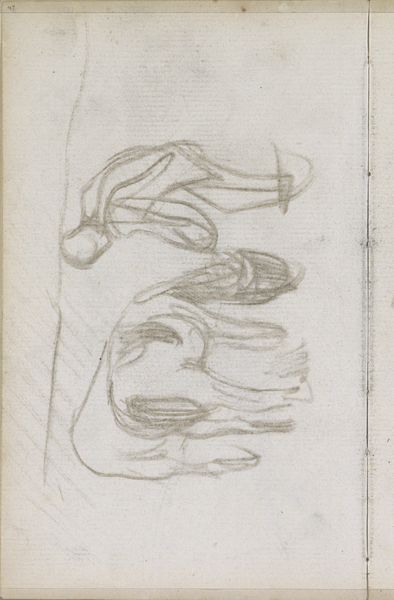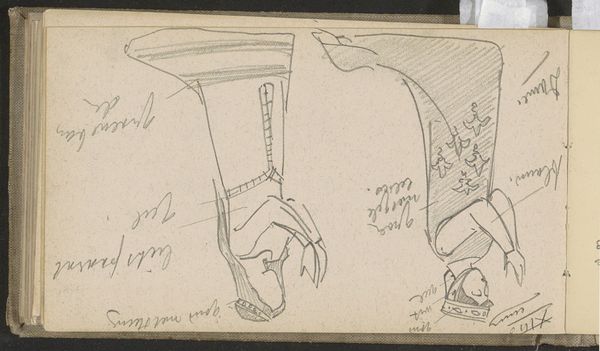
Drie vrouwelijke muzikanten, naar een voorbeeld uit de dertiende eeuw na Christus 1892 - 1901
0:00
0:00
drawing, paper, pencil
#
drawing
#
figuration
#
paper
#
pencil
#
genre-painting
#
academic-art
Copyright: Rijks Museum: Open Domain
Editor: This pencil drawing by Antoon Derkinderen, "Three Female Musicians, After an Example from the Thirteenth Century AD," dates between 1892 and 1901. I find its rough sketchiness almost contradictory to the traditional subject matter. How do you interpret Derkinderen's choice to depict this scene in such a manner? Curator: That’s a great observation! The academic art style combined with this almost unfinished sketch-like quality points to an interesting tension. We often consider academic art as rigid and formal, focusing on perfected depictions. Here, Derkinderen presents something different. Do you think his choice to reference the 13th century is purely artistic, or does it indicate a commentary on the role of art institutions and tradition itself? Editor: Well, knowing this was created near the turn of the century, could it be about revisiting or even challenging accepted norms through art? Like, going back to the roots to maybe… redefine the future of art? Curator: Precisely. It's about invoking a specific period, imbuing it with new life and contemporary concerns. Why these musicians, and why reference a bygone era? How did such genre painting contribute to or resist broader cultural and social changes? Editor: It almost feels like he's inviting a conversation across time periods about women in art and music. Something that can be reinterpreted in every age and culture. Curator: That’s insightful! His choices, whether intentional or subconscious, contribute to the ongoing dialogues around gender, representation, and historical influence that still occur today within galleries and museums. Editor: So, it seems even what appears simple in execution invites much more debate once you view it as part of its place in the broader historical moment. Curator: Exactly. It reminds us to consider the public role of art: to foster dialogue and constantly examine the politics inherent within images, how the past informs the present.
Comments
No comments
Be the first to comment and join the conversation on the ultimate creative platform.
